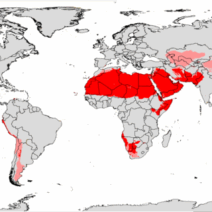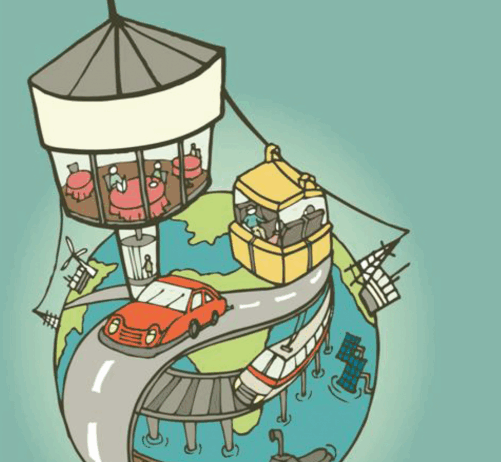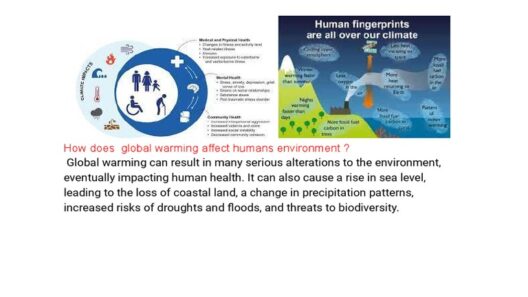As global temperatures continue to rise, a pertinent question surfaces: can cities beat global warming? Urban areas, teeming with life and innovation, present both challenges and opportunities in the fight against climate change. With more than half of the world’s population residing in cities, the decisions made within these urban landscapes carry significant weight. The concentration of resources, ambitions, and creativity can lead to innovative local solutions that effectively address the existential threat of global warming.
One of the most vital aspects of this endeavor is the recognition of cities as a significant contributor to greenhouse gas emissions. According to the Global Covenant of Mayors for Climate and Energy, urban areas are responsible for approximately 70% of global CO2 emissions. Thus, for cities to be part of the solution, they must embark on a transformative journey that encompasses energy consumption, waste management, urban planning, and community engagement.
Municipalities around the world have begun to adopt ambitious climate action plans, demonstrating that local governance can lead the way. A prime case study is found in Copenhagen, Denmark, where the city has vowed to become carbon neutral by 2025. This commitment includes a multifaceted approach: expanding the cycling infrastructure, investing in wind energy, and promoting district heating systems. Such initiatives reveal a blueprint for others to follow, underscoring how urban centers can harness innovation to redefine energy usage.
The concept of ‘green urbanism’ is gaining traction in cities globally. This paradigm shift emphasizes the integration of green spaces, which not only enhance urban aesthetics but also function as carbon sinks. Roof gardens, urban forests, and parks absorb CO2 and mitigate the urban heat island effect, a phenomenon where city areas become significantly warmer than their rural counterparts. Singapore stands out with its innovative vertical gardens and extensive tree canopy that provides shade and fosters biodiversity, thus serving as an exemplary model of climate-sensitive urban design.
Transportation remains a formidable challenge within cities, contributing substantially to carbon emissions. Aggressive strategies to promote alternative modes of transport are paramount. Cities like Amsterdam and Utrecht have prioritized cycling, establishing comprehensive bike lanes and rental systems. These changes reduce reliance on fossil-fuel-dependent vehicles while promoting healthier lifestyles. Furthermore, the advent of electric public transport systems is revolutionizing urban mobility. Cities are increasingly investing in electric buses and trams, reducing emissions vis-à-vis traditional diesel-operated counterparts.
Moreover, innovative public transportation solutions can reshape urban landscapes, as evidenced by the rise of on-demand transit services like ridesharing. These services can complement existing public transport systems, reducing the number of private vehicles on the road. However, the challenge lies in ensuring that such services are efficient, sustainable, and that they lower overall emissions rather than exacerbating congestion.
Waste management is another crucial pillar of urban climate action. Landfills contribute substantially to greenhouse gas emissions, and cities are reevaluating their waste disposal strategies. Zero-waste initiatives strive to minimize landfill use through recycling and composting. San Francisco aims to divert 100% of its waste from landfills by implementing comprehensive recycling programs and community engagement. By transitioning to a circular economy, urban centers can significantly reduce their carbon footprint, reaffirming their role as innovative leaders in sustainability.
Engaging the community is indispensable in the quest to combat climate change. Local initiatives like community gardens and climate action groups empower citizens, cultivate awareness, and foster collaboration. Participatory planning, where community voices inform urban policy, encourages citizen investment in sustainability efforts. The city of Portland, Oregon, exemplifies this approach by incorporating local input in its climate action strategies, thereby enhancing community ownership and collective efficacy in addressing global warming.
Furthermore, the intersection of technology and climate action is a burgeoning field within urban environments. Smart city technologies harness data analytics to optimize energy usage and resource management. Sensors can track air quality and energy consumption in real-time, enabling cities to respond swiftly to issues. For instance, Barcelona employs a smart parking system that reduces time spent searching for parking, thus decreasing emissions and traffic congestion. Such technological advancements facilitate more efficient urban life while providing valuable insights into managing climate challenges.
While these innovative local solutions present a promising outlook, they require commitment and investment from both local governments and the private sector to become widespread. It is imperative for cities to collaborate with businesses, NGOs, and citizens to create sustainable ecosystems that facilitate the transition to climate-resilient communities. Public-private partnerships can fund renewable energy projects, enhance infrastructure, and accelerate the implementation of green technologies.
However, disparities often exist within urban populations that can deter equitable climate action. Marginalized communities frequently bear the brunt of climate impacts—higher temperatures, poor air quality, and lack of resources. Consequently, successful climate initiatives must prioritize inclusivity and social equity, ensuring that all residents benefit from advancements in sustainability. Developing comprehensive climate plans that consider the unique needs of every community is fundamental to creating a resilient urban landscape that can withstand the realities of a changing climate.
In conclusion, cities have the potential to lead the charge against global warming through innovative local solutions. By harnessing their unique characteristics—dense populations, rich resources, and creative minds—urban centers can implement transformative actions ranging from sustainable transportation to waste management and community engagement. The path forward will require collaboration, inclusivity, and a steadfast commitment to sustainability. As cities rise to the challenge, they not only mitigate their own impact but also carve a sustainable future for the planet.







